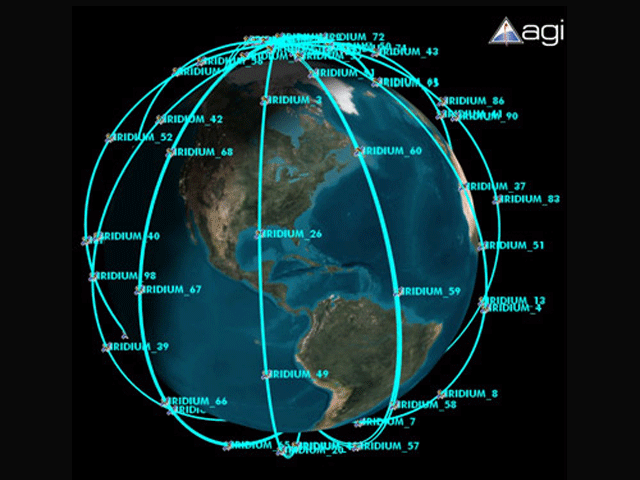Satellite supersystem created by the US Army

The most ambitious non-embodied idea of Bill Gates - the creation of a satellite Internet network based on 288 satellites - can be implemented through the US Department of Defense. The documents of the budget committee of the United States Congress have descriptions of the development of GPS - the most popular satellite system.
One of the scenarios that have been proposed by the US military offers integration with Iridium, a low-orbit satellite communications network. Today, this operator provides communications services throughout the world and, like GPS, is under the patronage of the US military.
The Iridium system includes 66 satellites orbiting 780 kilometers. Those half a million Iridium commercial customers usually use voice services - today's Iridium fleet is not suitable for broadband Internet. But Iridium is going to launch a new generation of satellites in 2015, which will allow to transmit information at speeds up to 1 Mbps.
“This could be a step towards creating a super system with new qualities,” says Sergey Zhukov, head of the Skolkovo space and telecommunications cluster. - Everything (tracking, navigation, television, emergency rescue, the Internet) will be global and one.
Russia, according to Zhukov, also needs to work on exploring the possibility of combining various satellite systems: "This creates a satellite envelope of the technogenic noosphere of the future."
The budget committee of the congress also described other directions for the development of GPS. The plans of the Americans show that they are primarily concerned about the noise immunity and signal stability, and only then the accuracy of the coordinates.
The US Department of Defense system characteristics are estimated without apparent optimism. The system operator claims that today the accuracy of determining the GPS coordinates is 10 feet (this is slightly more than 3 meters). However, many specialized sources cite data that this navigation system indicates the location much more accurately (an error of about 2 meters).
According to Sergey Revnivyh, deputy. General Director of TsNIIMASH (involved in the preparation of the federal target program for the development of the GLONASS system), the Russian navigation system is currently working with an 5,5 meter accuracy. Jealous promises that by the end of the year accuracy will be higher.
Americans plan to significantly improve positioning accuracy by 2020, when the basis of satellite fleet GPS will become third generation satellites. According to the US Department of Defense, the first series of third-generation satellites - GPS IIIA - will provide accuracy of 90 centimeters. The first GPS IIIA will be launched into orbit in 2014, and eight satellites will be built and launched before 2018.
After 2018, the Americans will launch the next series of satellites, the GPS IIIB. Although they will not give a higher accuracy in determining the coordinates, but for the military they will emit a signal of greater power. American security officials consider the security and signal strength of the main problem of GPS.
To eliminate interference, Americans will be in two ways: by generating a protected military signal and gradually increasing the power of the signal transmitted by the spacecraft. Compared to the signals received today, transmissions from GPS IIIB satellites will be five times more powerful. The next generation of GPS satellites, the IIIC series, will increase power by as much as 100. The latest generation satellites, which are planned to be launched from the 2025 year, will be provided to peaceful users with the accuracy of determining the coordinates up to 6 inches (15 cm).
Budget Committee documents contain information that before the 2030 of the year, the US Department of Defense is planning to launch 50 GPS satellites - on 2 – 3 per year. The program budget will be about 22 billion dollars with funding in 2012 – 2025. According to Izvestia, Vladimir Putin approved the budget of the Federal Target Program for the Development of GLONASS, the volume of which for 2012 – 2020 amounted to 330 billion rubles.
“By the 2020 year, we will be at least as good as GPS in accuracy,” said Sergey Revnivykh. - Russian developers are working on improving the signal for special consumers.
Jealous believes that after 2020, the improvement of the characteristics of GLONASS will be realized in order to get the centimeters of accuracy promised by the Americans 15.
Information